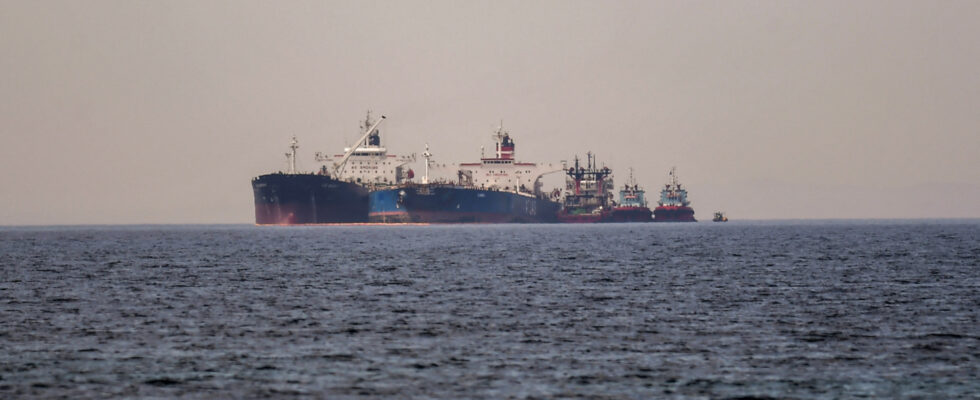Since the start of Russia’s invasion of Ukraine, the number of oil tankers with opaque ownership or without proper insurance has soared, experts say, allowing Russia to build a clandestine fleet to export its oil despite sanctions. .
What is a “ghost fleet”?
The Kyiv School of Economics (KSE) defines a “ghost fleet” as commercial vessels that are not owned by countries in the G7 coalition with the European Union, or that do not use P&I insurance, the insurance protection and compensation. “This is not something unusual, even before the war” in Ukraine, notes Elina Ribakova, economist at the KSE Institute, interviewed by AFP. “The ghost fleet is also used to free itself from the economic model of maritime transport of goods.”
This type of “shadow fleet” is for example also used by Iran and Venezuela, two states under American oil sanctions, or even North Korea, underlines Elisabeth Braw in a note. , analyst at the Atlantic Council, a think tank specializing in international relations.
According to data from Lloyd’s List Intelligence, the number of these ships doubled last year and now represent around 10% of tankers operating internationally. In January, the Atlantic Council counted 1,400 ships.
Why does Russia use a black fleet?
Oil embargo, capping of the price of Russian crude, ban on providing services enabling the maritime transport of oil… numerous sanctions against Moscow attack the windfall of oil exports, vital for Russia and in particular to finance its war in Ukraine.
To get around them, Moscow has had to reduce its dependence on Western maritime services by buying tankers to which it offers its own insurance services, according to Rystad Energy. “More than 70% of Russian oil transported by sea is thanks to the ghost fleet,” says Elina Ribakova.
The KSE institute estimates in its December “Russian Oil Tracker” report that “179 tankers” full of black gold “left Russian ports in November 2023”. In October, the Russian black fleet enabled the export of around 2.3 million barrels per day of crude oil and 800,000 barrels per day (mbd) of petroleum products, out of a total Russian production of 10 mbd, adds KSE.
What are the risks ?
“Most of the ships in this obscure fleet have not been inspected recently and their maintenance is not up to standard,” Lloyd’s List Intelligence warned in a December article.
The KSE institute regularly warns of the “enormous environmental risks for the EU” posed by these aging ships. Ships older than 20 years are expected to reach 11% of the world’s tanker fleet by 2025, according to the Atlantic Council, up from 3% before the Ukraine war.
These ghost ships do not have adequate insurance, called “P&I”, although it is mandatory for commercial ships to cover the risks of war, collisions or environmental damage such as oil spills. Some 90-95% of the P&I insurance market is in the hands of insurers from the European Union and the United Kingdom, which therefore enforce the sanctions against Moscow. “Other types of insurance – such as the alternative schemes proposed by the Russian and Iranian governments – are very insufficient,” emphasizes Elisabeth Braw.
In the event of an accident, the Atlantic Council estimates that the ghost fleet entails “considerable expenses for the ships they damage” but also “for the countries in whose waters the accidents occur”, thus having to assume the costs. costs.
